RV Adventure: Replace a Mountain Bike
Part 1
Part 1
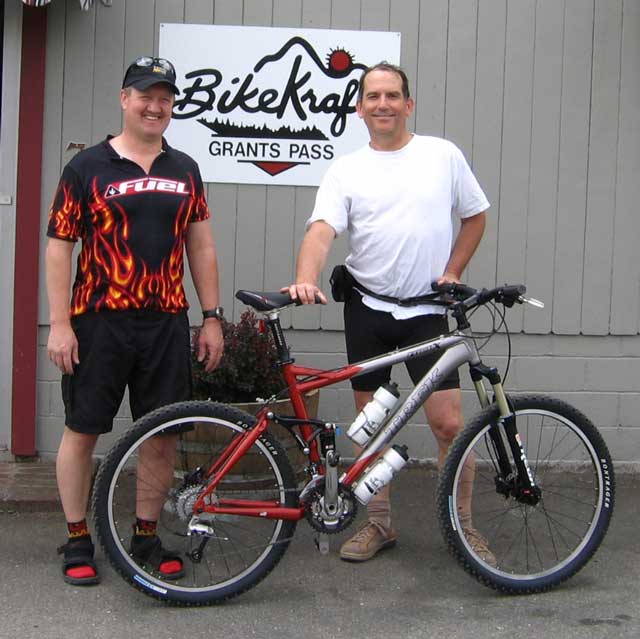

photo above you are looking at the proud new bike owner and Richard on the left.
What Morgan did not tell you in her story was that I owned a bike shop in Tahoe City, California from 1987 to 1990 so I know more than the average person about mountain bikes. In this three part story, I'm going to share the differences and similarities I see between these two bikes that are 18 years apart. I hope this will help you to understand a bit more about bike anatomy.
First, these two bike are virtually identical in price. So we are comparing apples with apples. They both sold new for well over $1000. People used to ask me how a bike
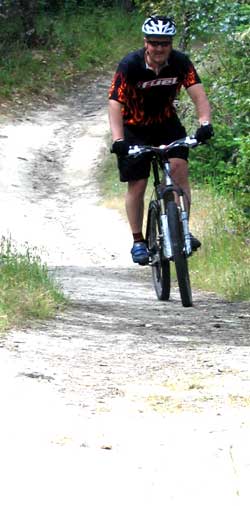
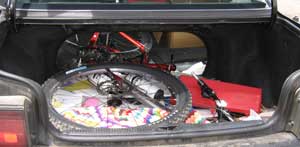 |
could be so expensive. The answer is always the quality of the components. The front shock-fork purchased alone, for example, is over $500. The components on these |
high end bikes are matched to give the best performance and durability. You can see that I was able to fit the new Trek into the trunk of the Toyota Camry by lowering the rear seat. It's a good thing Morgan was not along because that is her seat. In part 1, I'll discuss the suspension because without up- |
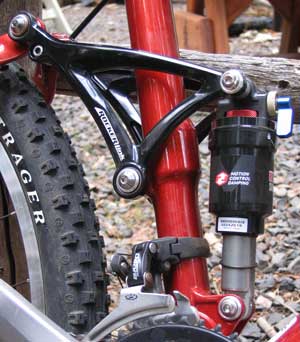 |
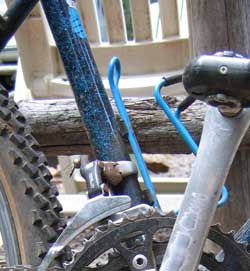
so I want quality and durability. If you divide the price of the bike by the number of miles I've ridden them, it works out to pennies per mile.
The rear "motion control damping" shock above allows the frame to flex which helps control the effects of rough off-road riding. There are times that you do NOT want the frame to flex however. Note the blue lever on the top of the piston. That lever will
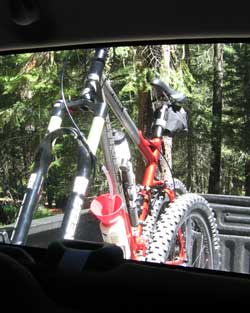
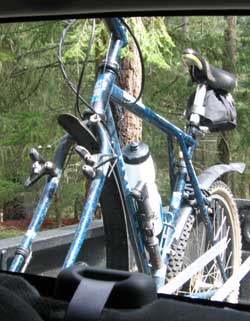
new to me. I'm use to bending my elbows and using them as "shock absorbers".
This is a wonderful Rock Shox air suspension fork on the right. It has 4" of travel. The amount of travel will vary from fork to fork and the more expensive forks have more travel and are made especially for cyclists who like to fly down rough hills. I'm not that kind of rider yet, it takes me too long to heal and remember, I'm still learning. Both the fork and rear shocks are air shocks. You bring them to a pressure to match the riders body weight.
Even though the Trek is 18
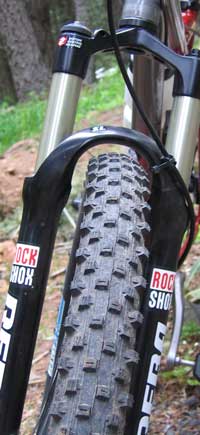
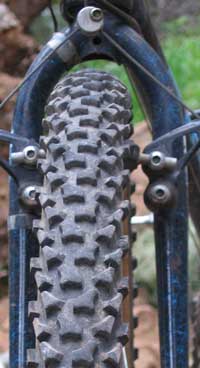
years newer than "Old Blue" I would not have purchased a new bike except that I wanted a suspension frame. There are many other improvements in the Trek, as you will see in parts 2 and 3, but none increase the performance enough to justify the expense of the new bike. When you buy a high end bike and take care of it, you can expect it to still be working fine 18 years later.
Note the lever on the top right of the Rock Shox fork.
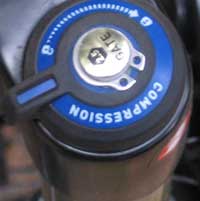
|
|